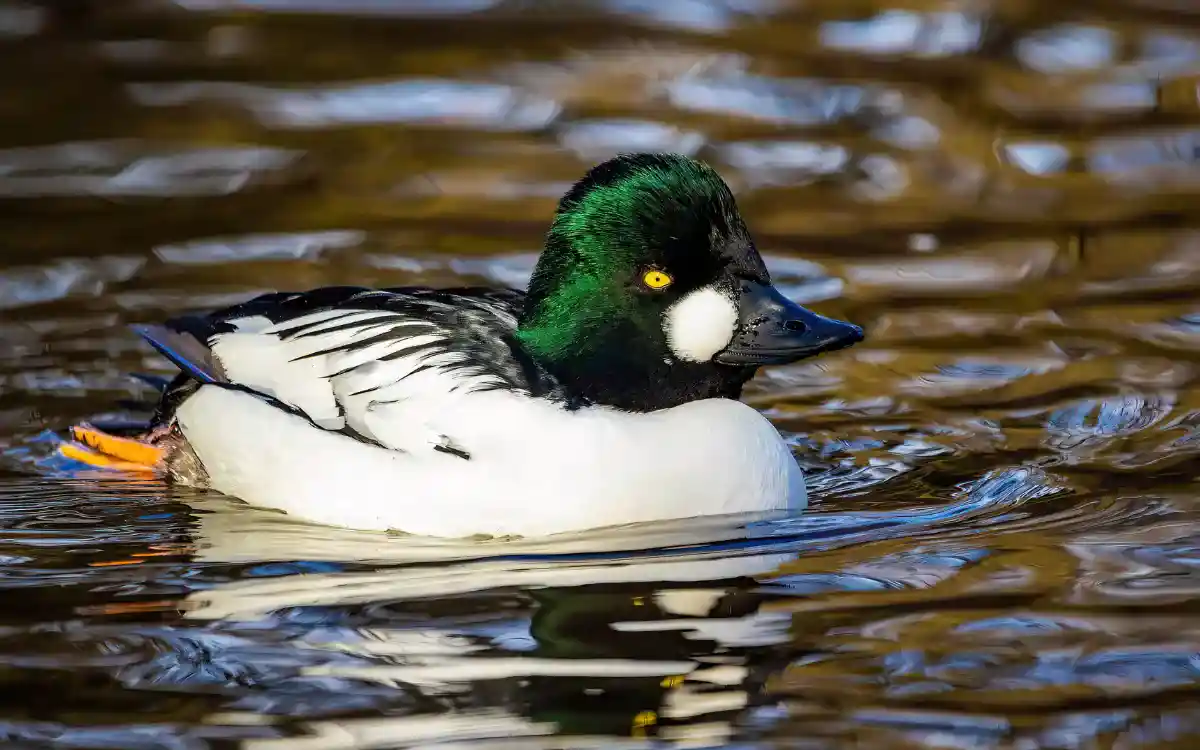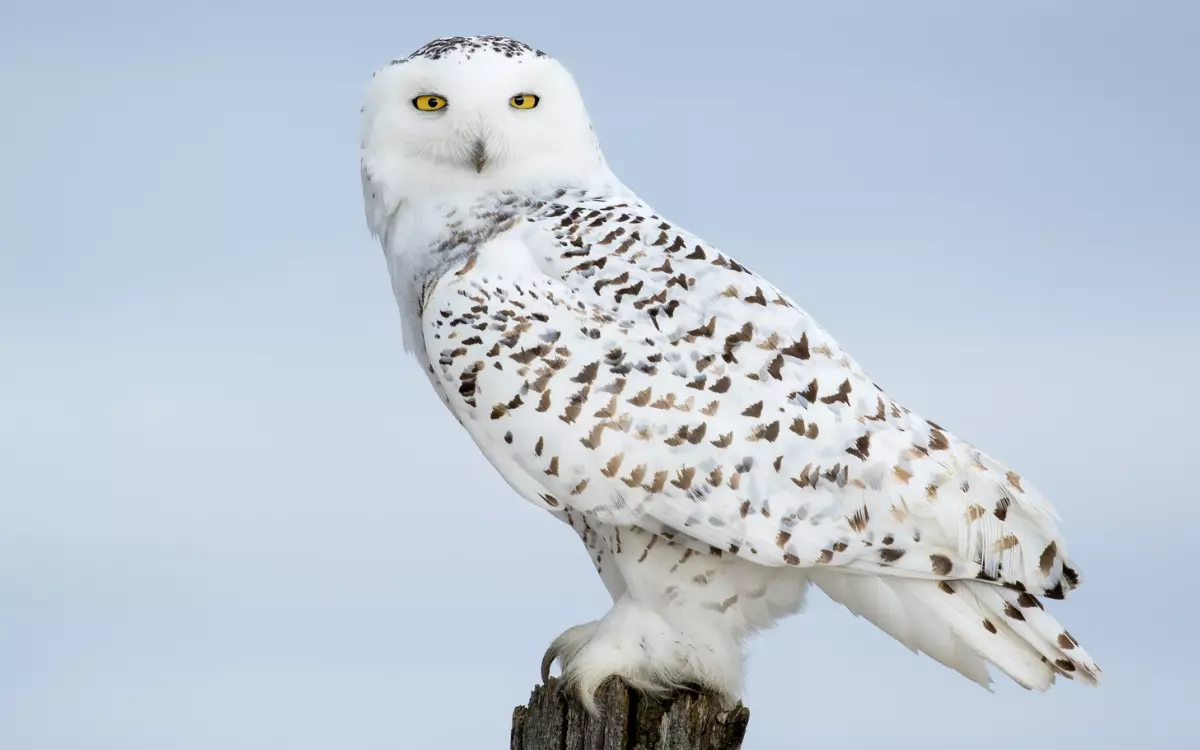10 Black Birds in Connecticut: Identification
Black birds are everywhere in Connecticut, but they’re far from ordinary. Some appear in huge flocks that fill the sky, while others perch quietly in wetlands, forests, or along the coast. Many are familiar backyard visitors, while a few are rare migrants passing through during spring and fall.
Because many of these birds share dark plumage, it can be tricky to tell them apart at first glance. But each has unique features, behaviors, and calls that make them easy to recognize once you know what to look for. This guide will help you identify the most common and interesting black birds in Connecticut, grouped by where you’re most likely to see them.
Common Backyard Black Birds
1.Red-winged Blackbird
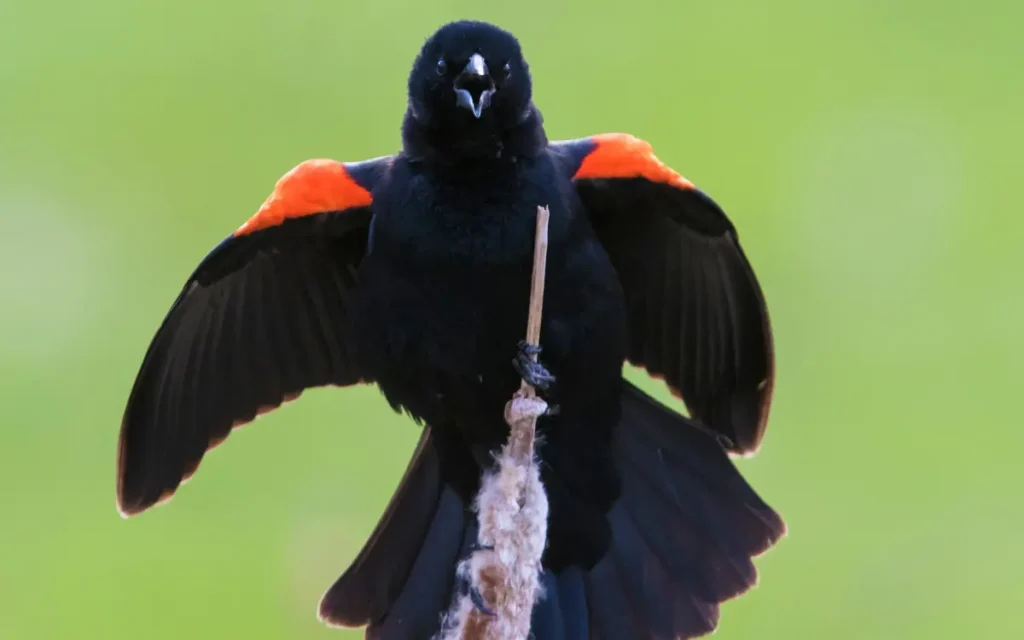
When you hear the sharp “conk-la-ree” call near a marsh or wet meadow in spring, you’re probably listening to a Red-winged Blackbird.
Males are glossy black with red and yellow patches on their wings, which they display proudly when singing. Females, on the other hand, are streaky brown and harder to identify.
These birds are among the first signs of spring in Connecticut and often form large flocks outside of breeding season.
2.Common Grackle

Bigger than most backyard birds, the Common Grackle has a glossy body that shines purple and blue in the sun.
With its long tail and piercing yellow eyes, it stands out in any group of blackbirds. Grackles are highly social and can appear in large flocks that raid feeders or fields.
They may not always be welcomed at feeders, but they are a fascinating part of Connecticut’s birdlife.
3.Brown-headed Cowbird
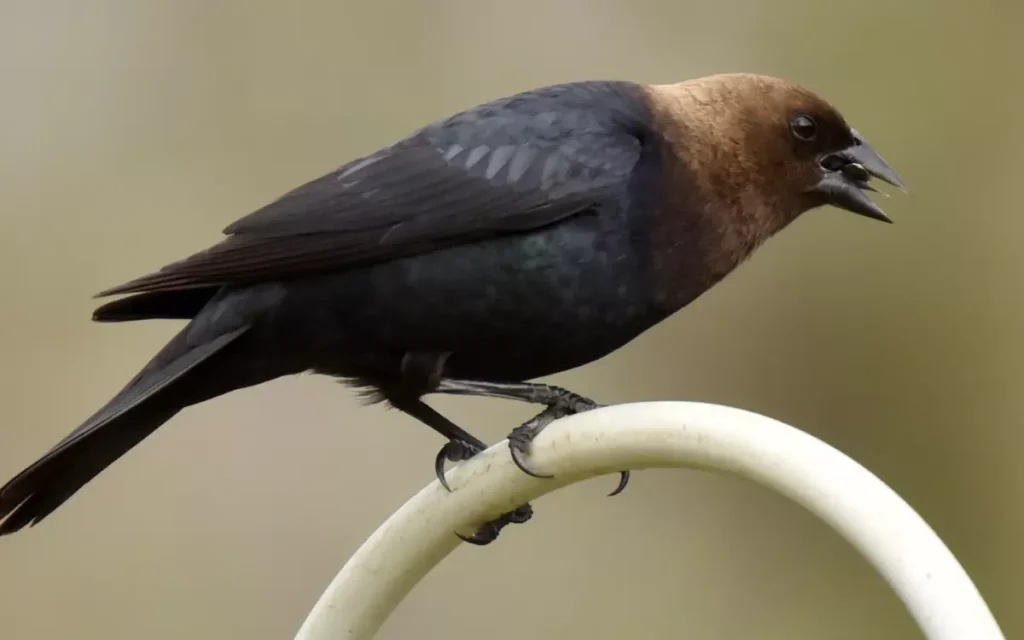
Cowbirds are known for their unusual parenting strategy: instead of raising their own young, they lay eggs in the nests of other species.
Males are sleek black with a distinct brown head, while females are a plain gray-brown. They’re often found in open fields and pastures, and sometimes around suburban areas.
Their behavior may frustrate smaller birds, but it’s part of what makes them unique.
Forest & Woodland Black Birds
4.American Crow
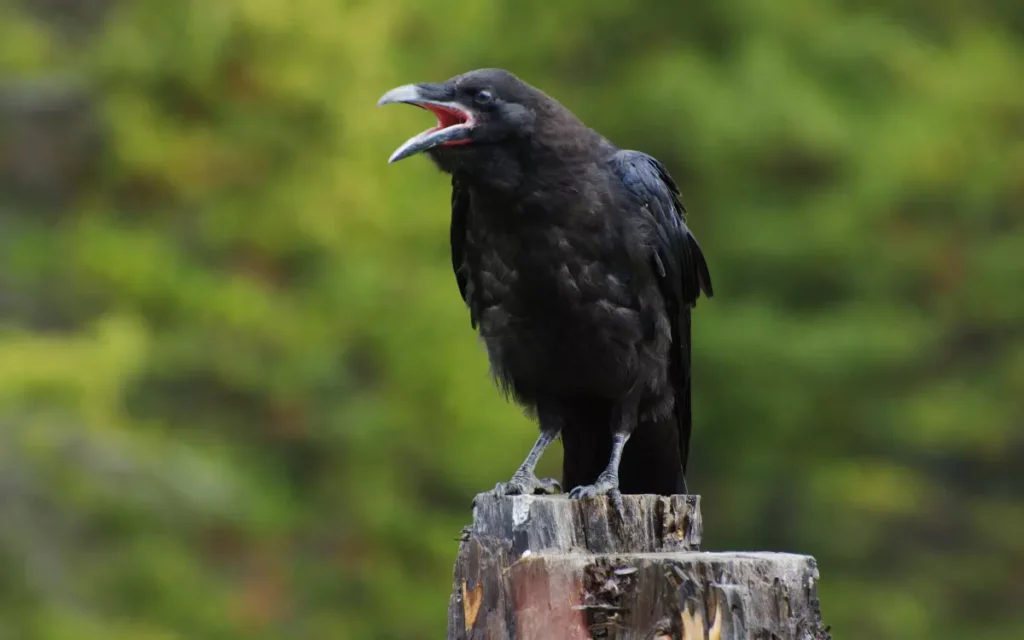
Perhaps the most recognized black bird in the state, the American Crow is intelligent, adaptable, and widespread.
These birds are solid black from bill to tail, with strong voices and a talent for problem-solving. They live in nearly every habitat, from forests and farmlands to city neighborhoods.
Crows are also highly social, often gathering in large flocks, especially in winter.
5.Fish Crow
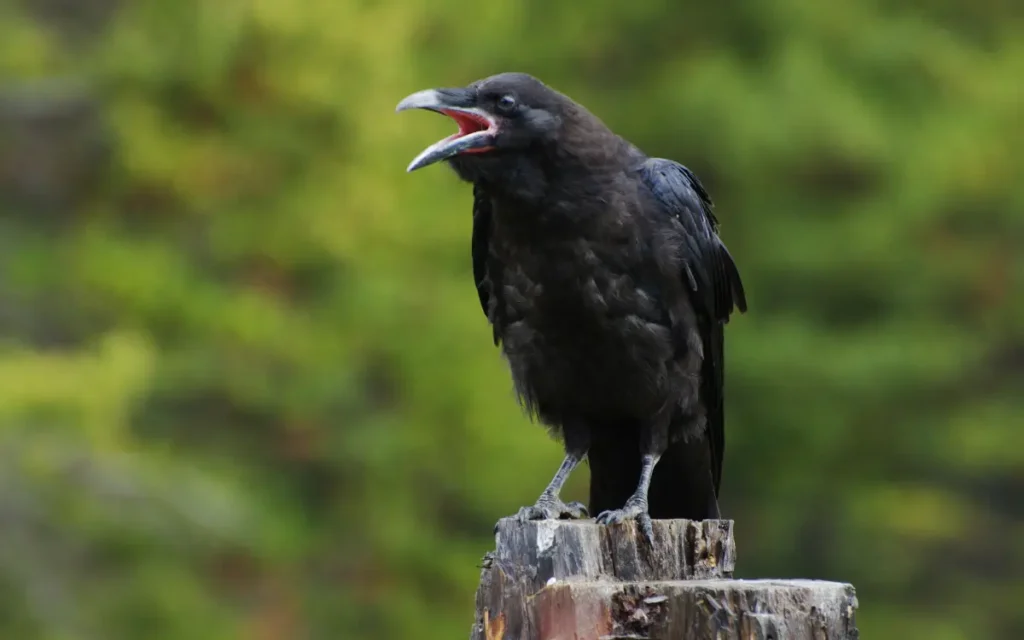
At first glance, Fish Crows look almost identical to American Crows. They are a bit smaller, but the best way to tell them apart is by sound.
Fish Crows have a nasal “uh-uh” call that’s very different from the caw of the American Crow. In Connecticut, they’re most often found near rivers, marshes, and coastal areas.
6.European Starling
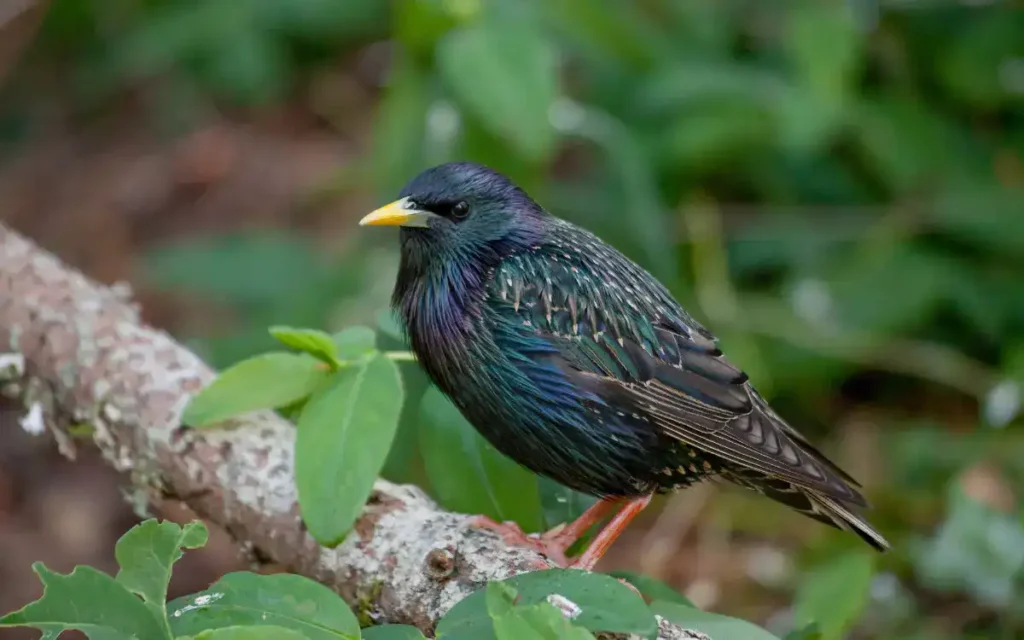
Although not native, European Starlings are one of the most common black birds in Connecticut.
Their plumage changes with the season: in winter, they are black with white speckles, while in summer they shine with iridescent green and purple tones.
Starlings are famous for their massive flocks, known as murmurations, where thousands of birds twist and turn in perfect unison across the sky.
Water-Associated Black Birds
7.Double-crested Cormorant
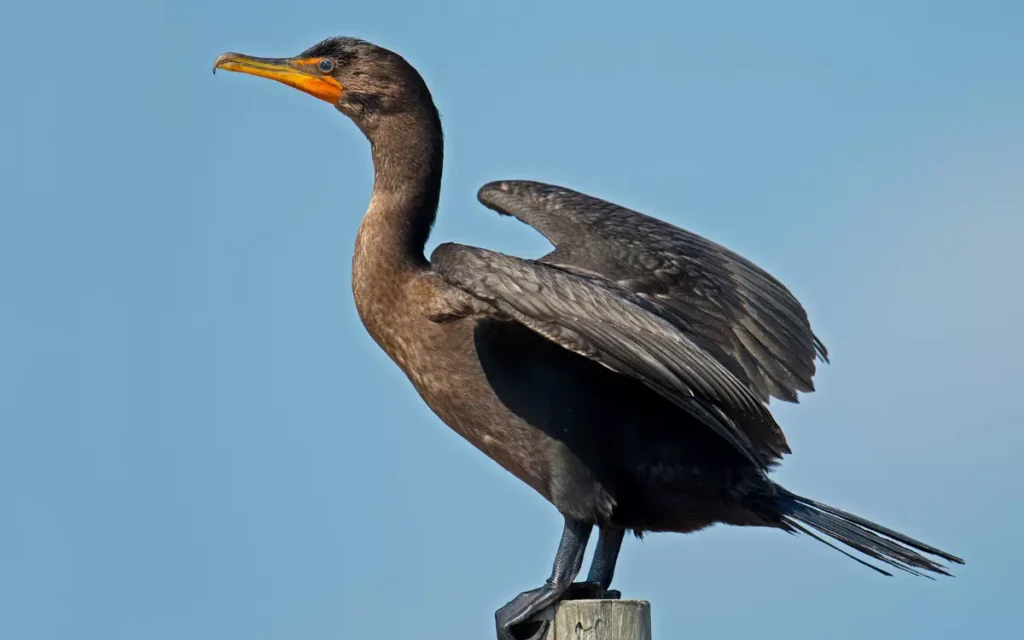
On lakes, rivers, and coastal waters, you might see the Double-crested Cormorant. These dark, long-bodied waterbirds are excellent divers that catch fish underwater.
They often perch on rocks or posts with wings spread wide to dry. Their posture is one of the easiest ways to identify them from a distance.
8.Black Scoter

The Black Scoter is a sea duck that winters along the Connecticut coast. Males are completely black with a distinctive orange knob on the bill, while females are brown.
They are most often spotted from shorelines during the colder months, sometimes in mixed flocks with other sea ducks.
Rare or Less Common Black Birds in Connecticut
9.Rusty Blackbird
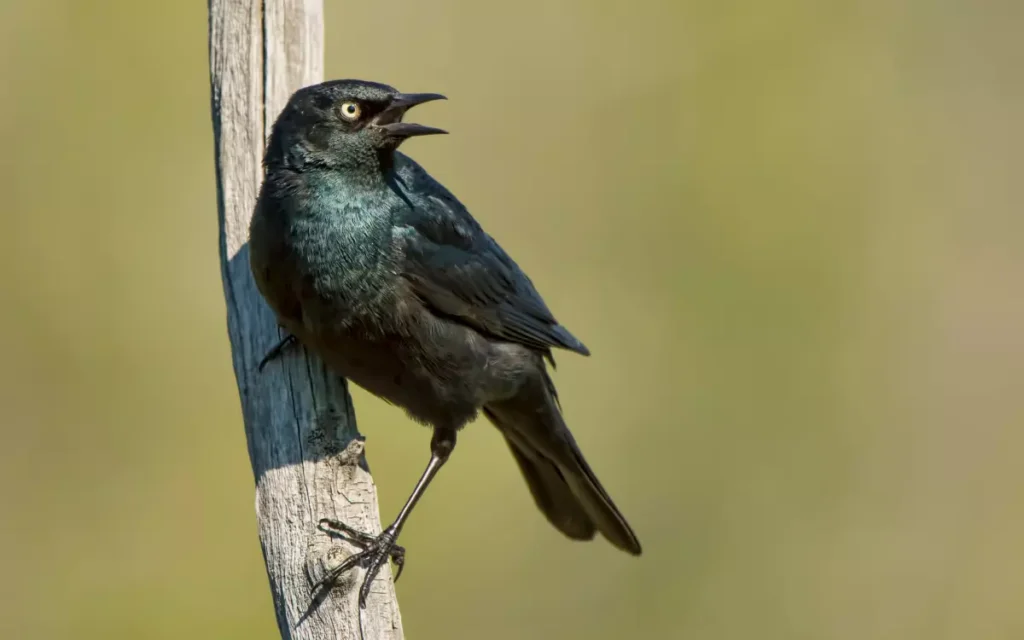
The Rusty Blackbird is less common and is considered a declining species. In breeding plumage, males appear glossy black, but in fall and winter, they develop a rusty-brown wash across their feathers, which gives them their name.
They pass through Connecticut during migration and are often seen in wetlands and wooded swamps.
10.Bobolink
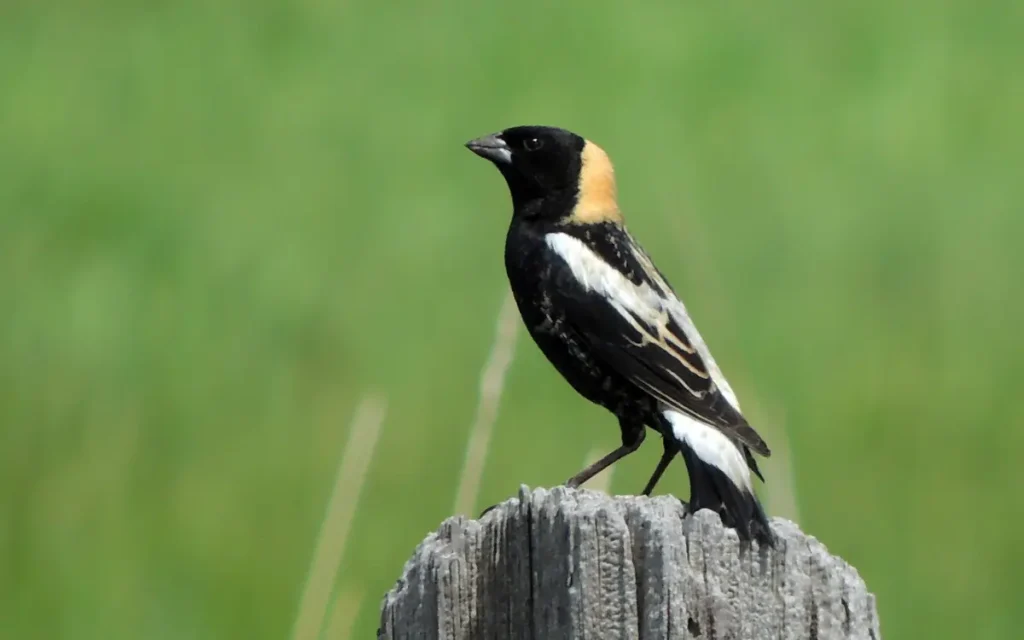
In breeding season, male Bobolinks have a striking pattern: a mostly black body with a pale yellow cap and white back.
These birds prefer grasslands and hayfields, where their bubbling, metallic song drifts across open fields.
They are not as common as blackbirds or crows, but they are a special find during late spring and summer.
Seasons of Black Birds in Connecticut
Each season brings a different mix of black birds to the state. In spring, Red-winged Blackbirds return in huge numbers, filling marshes with sound. Summer brings Bobolinks to hayfields and crows to nearly every neighborhood. In fall, large flocks of starlings and grackles gather together, creating noisy spectacles. Winter is quieter, but crows, starlings, and some grackles remain active, along with sea ducks like the Black Scoter along the coast.
Where to See Black Birds in Connecticut
Some species are so widespread that you can spot them almost anywhere, such as American Crows and European Starlings. For wetland-loving species like Red-winged Blackbirds and Rusty Blackbirds, look in marshes and swampy areas. Double-crested Cormorants are easy to see along rivers and the shoreline, while Black Scoters are best viewed along the Long Island Sound in winter. Grasslands and farmland are the best places to find Bobolinks during breeding season.
Black Bird Comparison Guide
| Bird | Distinctive Feature | Habitat | Season |
| Red-winged Blackbird | Red-and-yellow wing patches | Marshes, wetlands | Spring–Fall |
| Common Grackle | Iridescent purple-black, yellow eyes | Fields, feeders | Year-round |
| American Crow | Large, all black | Forests, towns | Year-round |
| Double-crested Cormorant | Dark waterbird, spreads wings to dry | Rivers, coastlines | Spring–Fall |
| Rusty Blackbird | Glossy black with rusty edges in fall | Wetlands | Migration |
FAQs
What is the most common black bird in Connecticut?
The American Crow is the most widespread, while Common Grackles and European Starlings are also very common.
How can I tell the difference between a Fish Crow and an American Crow?
The Fish Crow is smaller and has a nasal “uh-uh” call, compared to the caw of the American Crow.
Which black birds form the largest flocks?
European Starlings are famous for their massive murmurations, while Common Grackles also gather in large groups.
Do any black birds stay in Connecticut year-round?
Yes. American Crows, European Starlings, and some Common Grackles remain active throughout winter.
Are black birds considered bad luck?
Folklore sometimes paints them as omens, but in reality, they are valuable in the ecosystem, helping control insects, spread seeds, and clean up carrion.
Final Thoughts
Black birds in Connecticut are far from dull. From the clever crows and noisy starlings to the striking Red-winged Blackbirds and the rare Rusty Blackbird, each one adds its own character to the state’s birdlife. Learning to recognize their differences makes birdwatching more rewarding, whether you’re in your backyard, a marsh, or along the coastline.

